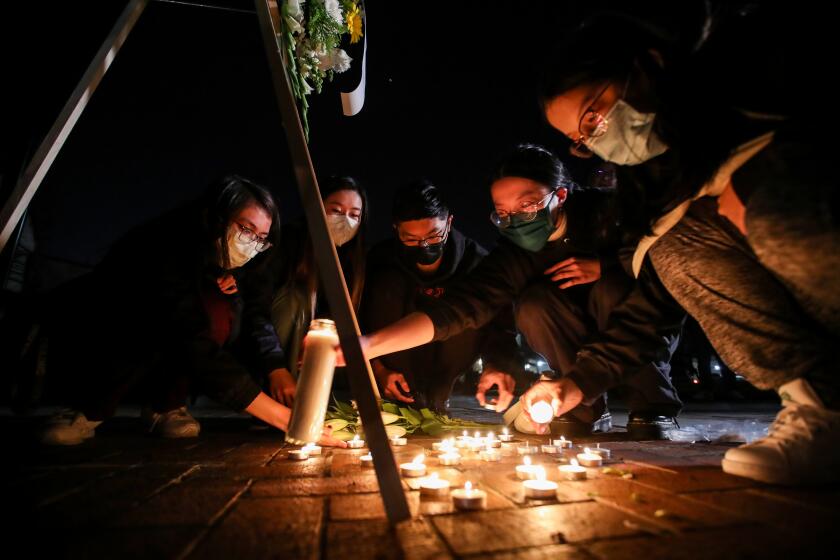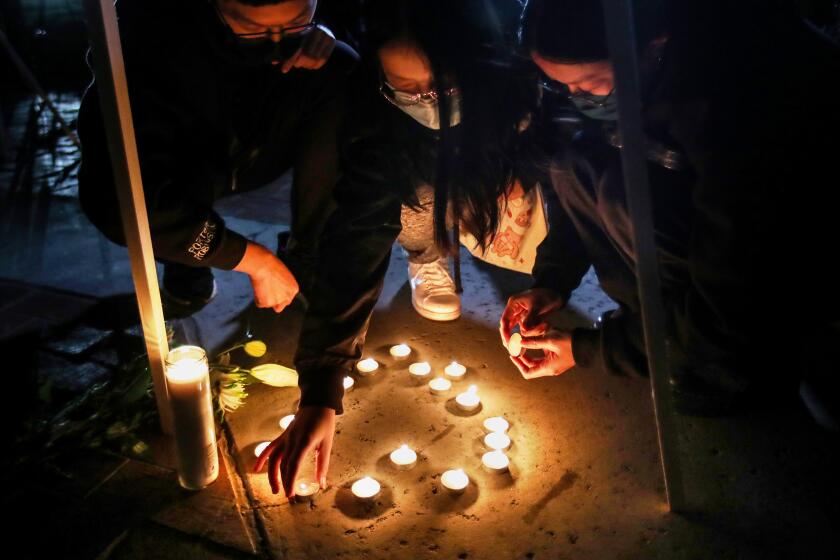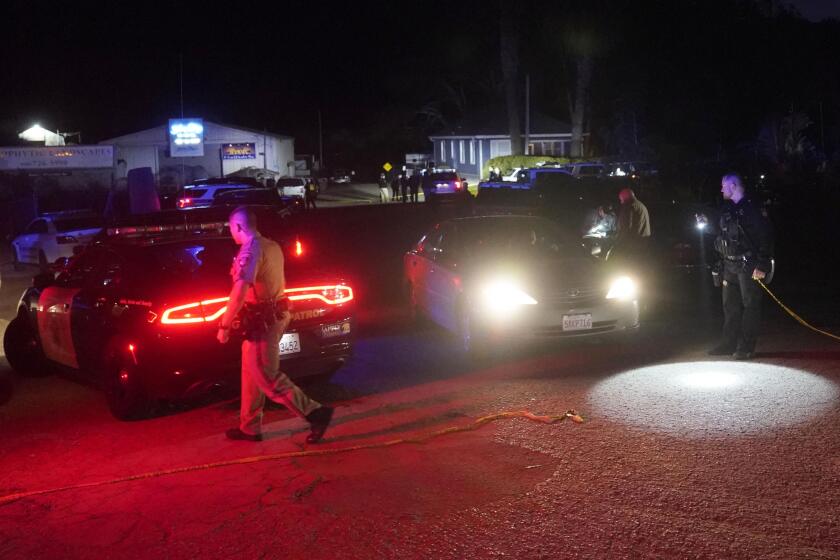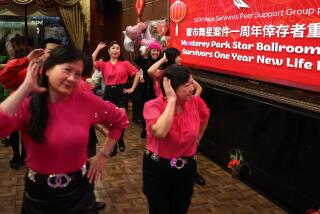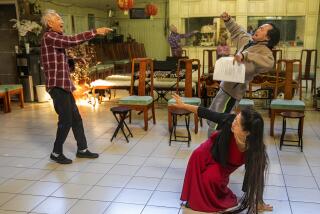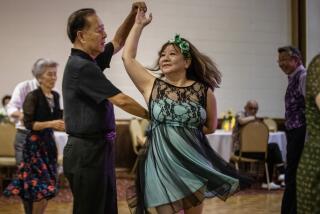Column: In Monterey Park and now Half Moon Bay, the pain of hearing it’s ‘one of our own’
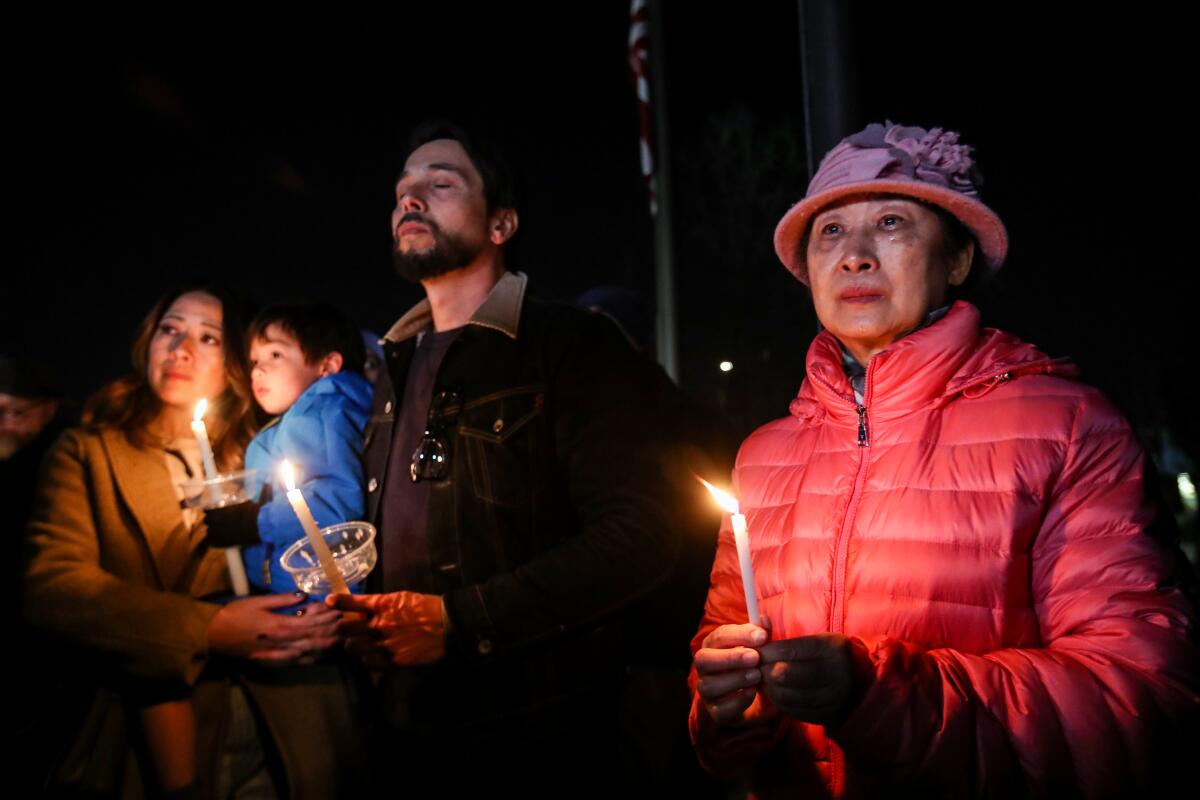
- Share via
Chuching Wang, president of the Taiwan Benevolent Assn. of California, squinted into the lights of about a dozen TV cameras and spoke softly, deliberately.
“How could this happen in my Monterey Park?” he asked, shaking his head of graying hair. “We are so proud to be a model minority.”
It was 7:40 p.m. on Monday and a crowd of more than 100 had gathered for the first of several vigils planned for this week, as people try to make sense of a mass shooting that left 11 dead and nine wounded in the heart of Southern California’s Chinese American community.
Authorities say that Huu Can Tran, 72, barged into the Star Ballroom Dance Studio on the eve of Lunar New Year and opened fire on Asian American grandparents and parents in their 50s, 60s and 70s — and then tried to do the same at Lai Lai Ballroom in Alhambra before fleeing. There’s plenty of speculation, including that Tran had been driven by jealousy over a woman, but his exact motives remain unknown.
‘Together we will make it through’: Mourners gather at vigil for 11 killed in Monterey Park shooting
More than 100 people gathered Monday night to pay their respects at a Monterey Park vigil that served as a sober contrast to the season’s usual Lunar New Year celebrations.
“How,” Wang asked again, “could this happen?”
What many mourning in Monterey Park didn’t know was that, by 7:40 p.m. on Monday, “this” had already happened again — almost 400 miles away in the Bay Area.
Exactly three hours earlier, sheriff’s deputies in San Mateo County announced they had arrested Chunli Zhao, saying the 66-year-old Asian American man had shot eight people — seven people fatally — at two locations near Half Moon Bay. Chinese American farmworkers are among the victims.
“Tragedy upon tragedy,” Gov. Gavin Newsom tweeted.
Indeed, upon tragedy.
Not only have California’s Asian American communities lost lives in a very public, very violent, very senseless manner in recent days. Those losses have been compounded by the pain of hearing that — as more than a few people told me at Monday night’s vigil — “one of our own” did it.
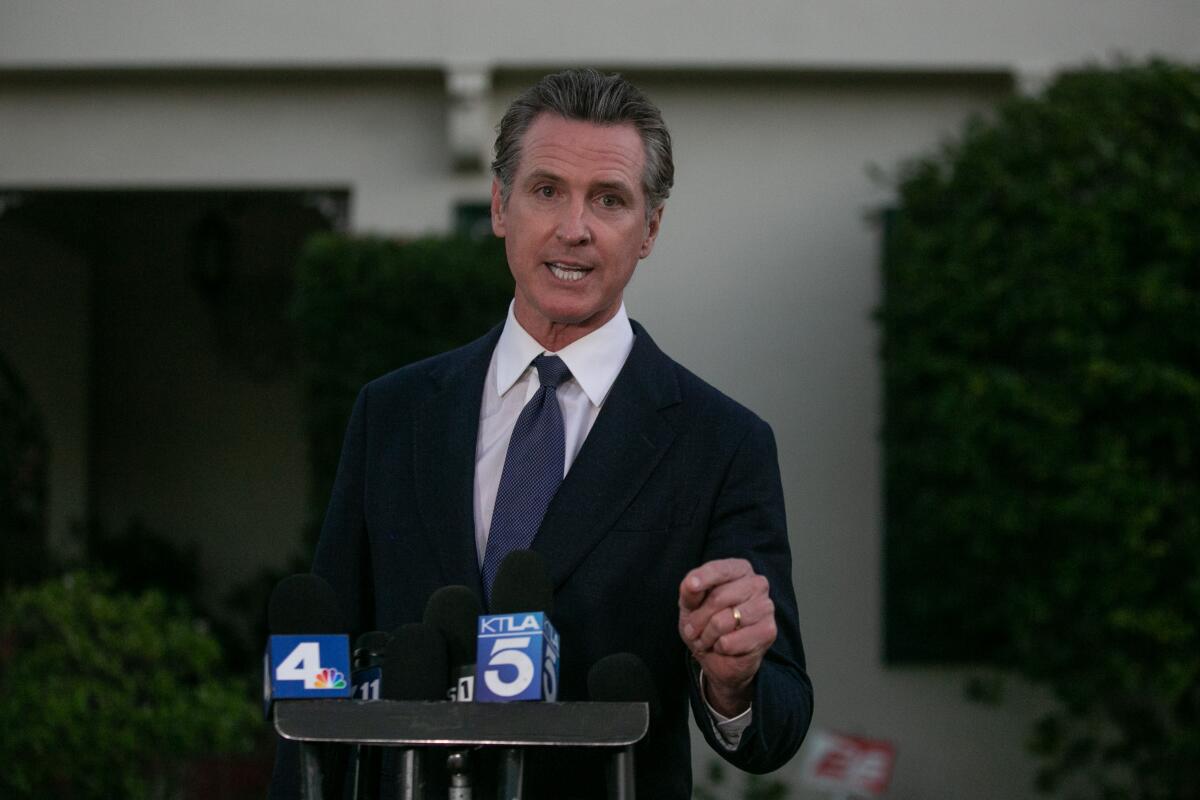
“One of the big issues right now is anti-Asian hate. And, of course, it’s a terrible thing,” newly elected San Gabriel City Councilmember Eric Chan told me after saying a few words to the candle-carrying crowd. “But as an Asian American man, I’m proud of my race. And then to hear that it was an Asian American committing the crime? It’s terrible.”
He shook his head.
“Just the thought that within our own community,” Chan continued, “we have someone who has that much animosity and hate in their heart, wherever it comes from. When it’s perpetrated by one of my own, I feel extra bad.”
It’s a painful feeling that’s easy for me to recognize because, unfortunately, Black people understand it all too well.
For numerous reasons — many traceable to poverty, trauma and centuries of systemic racism — Black people are both disproportionately the victims and disproportionately the perpetrators of crime. It’s a reality that has long been lamented by Black pastors and Black families as self-destructive and self-defeating.
And yet, even when Black people are killed in acts of hate — like when an 18-year-old white supremacist drove 200 miles to shoot Black people in a supermarket in Buffalo, N.Y., last year — it doesn’t take long for the conversation to shift to “but what about Chicago?” Or when activists take to the streets to denounce an act of police brutality that claimed another Black life, it’s always “but what about Black-on-Black crime?”
This sort of victim blaming, wrapped in a flimsy shield of whataboutism, leaves little room for our community’s pain, or for having honest policy conversations about economic equity and mental health. Instead, it insidiously instills shame.
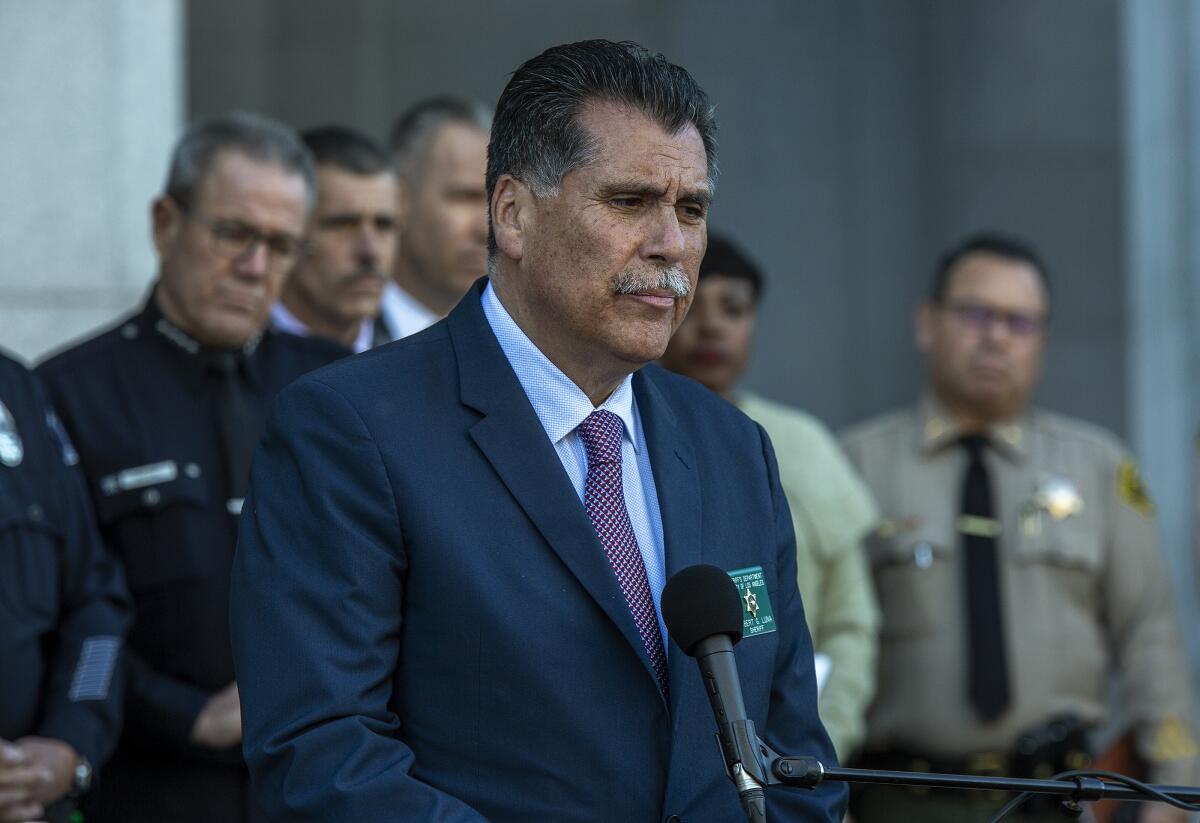
And so I was disappointed, though not entirely surprised, to see social media erupt in similarly demented, right-wing cheer after Los Angeles County Sheriff Robert Luna released a photo of Tran as a suspect in the Monterey Park shooting.
“Liberals was quick to holler hate crime against Asians for the mass shooting,” one person tweeted. “There is only one small problem. The shooter was Asian. Liberals want a race war so bad that they will stoop low to cause it.”
“The racist a— Democrats are not angry or sad about the Monterey shooting itself,” another tweeted. “They are mad that it was Asian on Asian crime and not a WHITE REPUBLICAN dude, so they can’t push their hate crime gun control narrative.”
So toxic was the Twittersphere that prominent Asian Americans started pushing back.
“There is a level of glee in these ‘the shooter is Asian’ replies that is just… go f— yourself,” tweeted Korean American blogger Phil Yu.
Asian Americans across the country are anguishing over the recent mass shootings, in which older Asian men have allegedly opened fire on other Asians.
“The snark from some people delighting in the fact that the shooter may be Asian because they’ve now successfully ‘owned the libs’ who feared this was a hate crime rather than acknowledging the collective trauma and grief our community has faced leading up to today says a lot,” tweeted Stephanie KyeongSeon Drenka, co-founder of the Dallas Asian American Historical Society.
Most troubling were the blatant attempts to downplay and even dismiss the very real surge in racism and hate crimes against Asian Americans since the start of the COVID-19 pandemic.
In California alone, there was an increase of 177.5% from 2020 to 2021 (although, overall, Black people are still targeted the most).
“Asians and Asian Americans have been nothing short of terrorized during the pandemic (as well as throughout American history),” Korean American author Min Jin Lee tweeted, “and adding mass shooting(s) perpetrated by members of our own community only compounds our loss of safety and our precarious sense of security.”
Also, hate crimes can be intraracial — as we were reminded of last year when David Wenwei Chou, a 68-year-old security guard from Las Vegas, shot six people inside a Taiwanese church in Laguna Woods. Authorities found notes in Chou’s car stating that he didn’t believe Taiwan should be independent from China and that he had an issue with Taiwanese people.
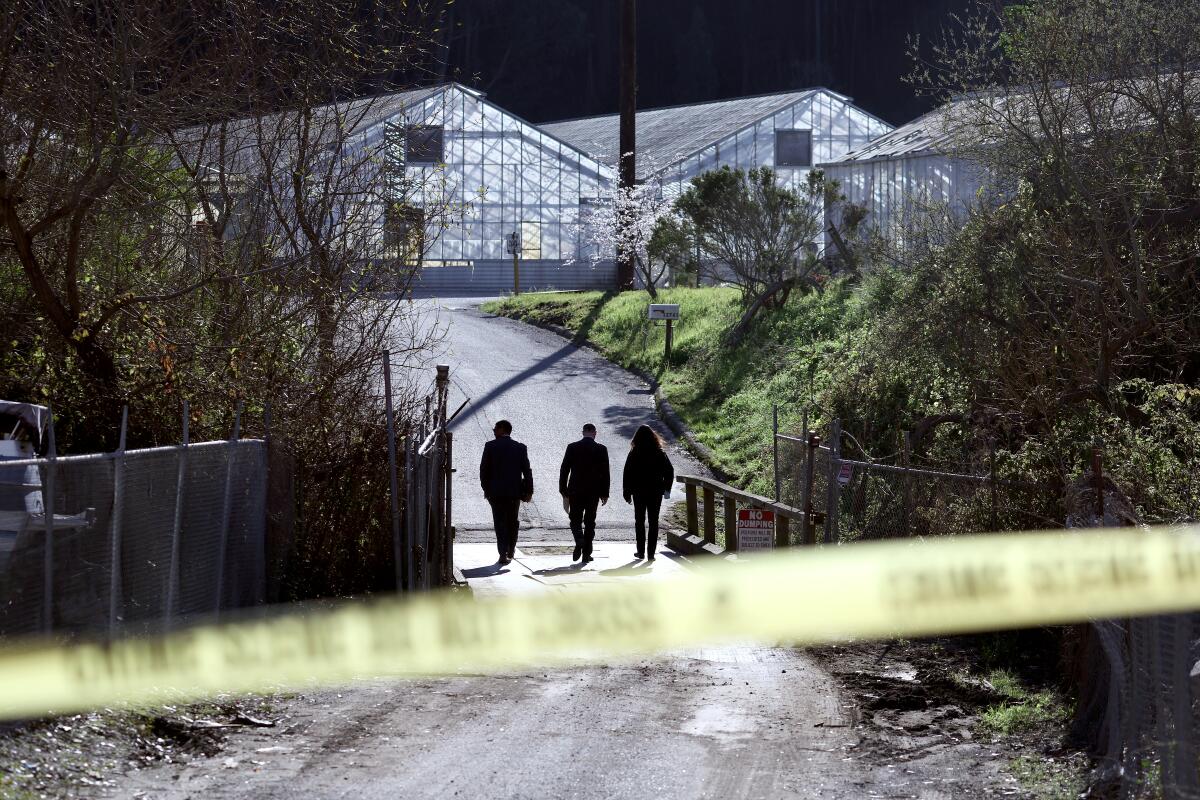
Helen H. Hsu, director of outreach, counseling and psychological services at Stanford University, laments that this sort of violence doesn’t get talked about enough within Asian American communities.
Meanwhile, gun deaths are up, along with gun purchases. Toxic masculinity remains a largely unaddressed problem, too often leading to domestic abuse and even murder.
“If you disaggregate us, as Asians, we have the highest household income and the very lowest. We have the highest levels of educational attainment and the very, very lowest,” she said. “When you mash those together, we look like a nice, normal bell curve. But there are people in our community who are really, really, really not doing well and we don’t talk about them.”
“But some of us like the model minority myth, and so there’s a lot of cultural stigma to hide our problems,” added Hsu, who also is president of the American Psychological Assn.’s Society for the Study of Race, Culture and Ethnicity.
If anything, the mass shootings in Monterey Park and Half Moon Bay have made those problems harder to hide and to ignore.
Tran, who killed himself on Sunday as a SWAT team surrounded his van in Torrance, was described by a former friend as a loner who was “miserable and desperate.” Two weeks before descending on two dance studios with a gun, he told police a wild tale about his family trying to poison him years ago and about being the victim of fraud and theft.
Zhao, who has been booked on murder charges, lived and worked with some of the farmworkers he is accused of shooting. According to the San Francisco Chronicle, one former co-worker accused Zhao of trying to suffocate him in 2013 and subsequently filed a restraining order.
Hyepin Im, president and CEO of Faith and Community Empowerment, said this is the time to do away with the myths and unpack that model minority stereotype. Because, as we’re seeing, one person’s problem, when it’s left unaddressed, can quickly become everyone’s problem.
A suspect is in custody after 7 people were shot to death in two separate incidents in Half Moon Bay, Calif.
“Many of the community leaders, we’re all rallying for the need to address gun violence and to address resources for mental health services,” she told me. “And so we are not taking it — at least in the rooms that I’ve seen — as a shame factor.”
Newsom, speaking to residents in Monterey Park earlier this week, acknowledged that he was walking through a community that “feels under-respected, under-appreciated [and] under-resourced.”
It shouldn’t take a mass shooting to make it clear that people have unaddressed needs. And no community should be made to feel ashamed for demanding the government attention and resources necessary to prevent future harm.
That’s as true for Asian Americans as it is for Black people.
“It is always sad when someone in your community has committed a heinous act. We’re always fearful: ‘Is that our race?’” Im told me. “That, I think, is the reality of America.”
More to Read
Sign up for Essential California
The most important California stories and recommendations in your inbox every morning.
You may occasionally receive promotional content from the Los Angeles Times.
